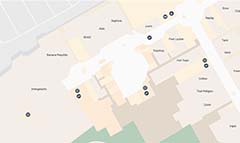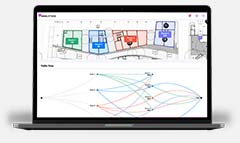
In-store product placement is crucial to the success of any retail store. With hundreds of different brands out there competing for attention and recognition, shelf space is at a premium. The competition between new brands and established ones for this limited space is fierce.
Where you display products and your store’s layout strategy can have a major influence on a customer’s decision to buy your product. Understanding where to place items within your store can be the difference between selling a few units and selling a couple hundred units.
What is in-store display placement?
In-store display placement is the art of deciding where your products appear within a retail space through planning, design, and negotiation. Display placement also involves spatial analysis of shelving and the use of planograms, which are visual diagrams of product shelving that help merchandisers maximize capacity.
When in-store displays are effectively placed, brands are recognized much more easily, and sales are maximized. It’s the best of both worlds. When trying to optimize display placements, stores need to consider where the majority of the foot traffic is in the store, the size of the store, and what other items are being sold within that particular category.
Also, in-store display placement consists of strategies implemented by field marketing and sales teams, such as the organizing and tracking of placed products and the restocking of empty shelves.

Retail in-store display placement
For retail stores, charging for space, charging to remain in that space, and charging to limit competitor shelf space is much more advantageous for larger well-known brands. For new brands, fighting for prime real estate on the store shelves can be a challenging. In order for new products to avoid failure, they must:
- Co-brand their display
- Target a failing competitive brand
- Know their unique prime shelf real estate
- Consider the broker option
- Build clout
- Fight for eye level placement
Analytics rules all
Even though earlier in this article we said product display placement was an ”art”, there should be no guesswork to it. Using insights gleaned from detailed data and analytics can ensure your displays are placed in the most optimized positions. It’s great to feel confident about your product placement plan, but the only sure way to guarantee success is through real-time data. Retailers should be collecting three types of data from their displays: observational, activity, and sales data.
Observational data concerns the qualitative information your representatives are compiling from the field.
Activity data is the number regarding the total store visits or actions taken in the store.
Sales data is the quantitative data that tracks how much is being sold within a given period.
Luckily for you, when you implement Mapsted technology into your property, we take the guesswork out of in-store display placement. Our platform provides the detailed analytics you need to quickly maximize your profit. Taking a data-driven approach to in-store product placement can help improve your bargaining power when negotiating shelf space with other brands.
Powerful Indoor Location Services
- Flexible pricing
- No design fees
- 24/7 Support
The two main take-aways here:
- In-store display placement is the practice of placing products in the best spot possible to maximize sales
- Using real-time analytics to monitor the success of your in-store displays will guarantee you get a leg up on the competition
Start using detailed analytics today to upgrade your company’s in-store display placement strategy.




